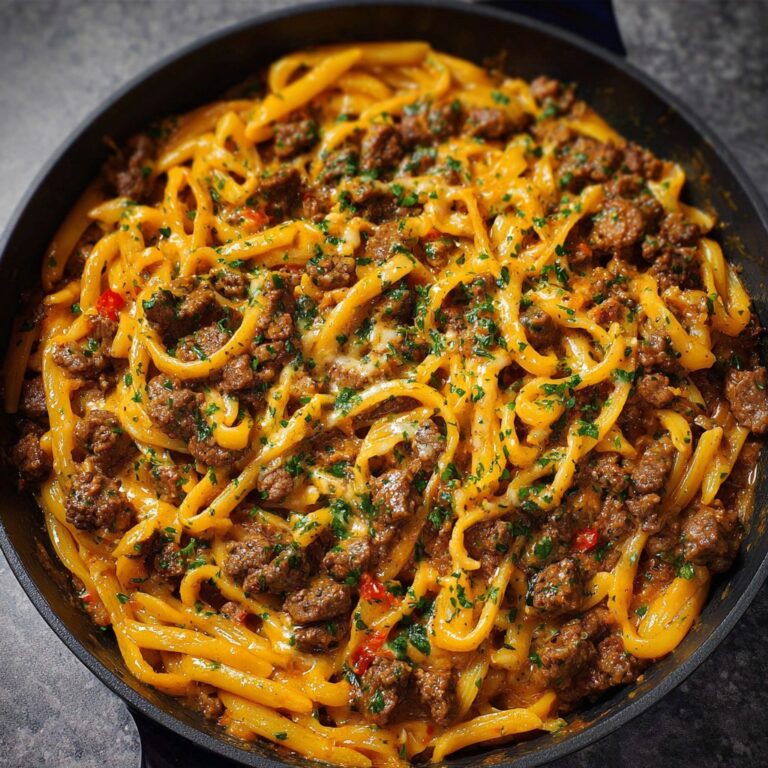Creamy Carbonara
Creamy Carbonara is a classic Italian pasta dish cherished worldwide for its luxurious texture and bold flavors. Blending silky egg yolks, tangy cheese, and crispy pancetta or bacon with tender pasta, Creamy Carbonara epitomizes Italian comfort food.
The dish's roots trace back to Lazio, especially Rome, with most traditionalists insisting on guanciale (cured pork cheek) and Pecorino Romano cheese. However, modern adaptations like the Creamy Carbonara recipe balance authenticity with creamy indulgence, making it the perfect choice for family dinners or special occasions.
The secret to authentic Creamy Carbonara lies in timing and technique. The rich sauce comes together through the gentle heat of freshly cooked pasta, which helps the eggs and cheese emulsify into a smooth, creamy coating. Unlike common misconceptions, no heavy cream is used in the classic Italian version.
Instead, eggs and cheese provide the luscious consistency, as highlighted by culinary sources such as La Cucina Italiana (https://www.lacucinaitaliana.com/). This dish's popularity has soared due to its simplicity, relying on high-quality ingredients and a few quick steps to achieve restaurant-quality results at home.
Whether you're trying to master an Italian staple or looking for a satisfying weeknight meal, this Creamy Carbonara recipe is your gateway to the heart of Italian cuisine.
Ingredients for Creamy Carbonara
- 400g (14 oz) spaghetti or bucatini pasta
- 150g (5 oz) guanciale or pancetta, diced
- 3 large eggs
- 1 large egg yolk
- 100g (3.5 oz) Pecorino Romano cheese, finely grated
- 30g (1 oz) Parmigiano-Reggiano cheese, finely grated (optional)
- 1 teaspoon freshly cracked black pepper
- 1 teaspoon sea salt, for pasta water
Instructions for Making Creamy Carbonara
- Bring a large pot of salted water to a vigorous boil. Add the spaghetti and cook until al dente according to package instructions, typically 9-11 minutes.
- While the pasta is cooking, heat a large skillet over medium heat. Add the guanciale or pancetta and cook until crisp and golden brown. Stir occasionally to render fat and achieve uniform crispiness. Remove from heat and set aside, keeping the rendered fat in the pan.
- In a medium mixing bowl, whisk together the whole eggs, egg yolk, Pecorino Romano, Parmigiano-Reggiano (if using), and freshly cracked black pepper until creamy and well combined.
- When the pasta is al dente, reserve about 1 cup of the pasta cooking water, then drain the pasta thoroughly.
- Add the drained pasta to the skillet with the rendered guanciale and its fat, off the heat. Quickly toss to coat the strands in the fat.
- Pour the egg and cheese mixture over the hot pasta, tossing vigorously and adding reserved pasta water a little at a time until a glossy, creamy sauce coats every strand. The residual heat will cook the eggs gently, creating an emulsified sauce. Do not scramble the eggs.
- Serve immediately, garnishing with extra Pecorino Romano and freshly ground black pepper.
Nutritional Information
Creamy Carbonara is a decadent yet balanced dish rich in protein and essential minerals. A single serving (approximately one-fourth of this recipe) provides around 470-520 calories, depending on the cheeses and pasta you select.
Each serving contains roughly 22 grams of protein from eggs and cheese, making Creamy Carbonara a satisfying meal for active individuals.
The dish does have a moderate to high fat content (about 18-22 grams per serving), primarily from the pork and egg yolks, which contribute to its creamy texture and mouthfeel. Carbohydrates typically contribute about 60-65 grams per serving, making it best suited for lunch or dinner.
Pecorino Romano and Parmigiano-Reggiano supply valuable calcium and phosphorus for healthy bones, while eggs provide vitamin D, B vitamins, and trace minerals. Guanciale or pancetta is a source of iron and other micronutrients but should be enjoyed in moderation due to sodium and saturated fat content.
For an in-depth breakdown of pasta nutrition and portioning, visit Healthline's pasta guide (https://www.healthline.com/nutrition/is-pasta-healthy). Remember that adjustments like using whole grain pasta or reducing cheese can tailor the nutritional profile to your needs.
Wine/Beverage Pairings With Creamy Carbonara
Classic Italian wines complement Creamy Carbonara beautifully. A dry white such as Pinot Grigio or an unoaked Chardonnay enhances the dish’s creaminess without overwhelming its delicate flavors. For those who prefer red, a light-bodied Barbera or Chianti provides a bright, slightly acidic counterpoint that cuts through the richness.
Non-alcoholic options include sparkling water with lemon or an herbal iced tea to cleanse the palate between bites. Whatever your beverage choice, serve it chilled to contrast the warm, creamy pasta.
Cooking Tips and Variations
Achieving a luxuriously creamy texture in your Creamy Carbonara rests on a few expert techniques. First, always use room-temperature eggs, which blend more smoothly into a creamy sauce. Freshly grate your cheeses for optimal melting and flavor.
The choice of pasta can be adapted—spaghetti, bucatini, or rigatoni all work, but al dente cooking is key. Guanciale is preferred for authenticity due to its rich, porky flavor, but high-quality pancetta or thick-cut bacon makes a worthy substitute if guanciale is unavailable.
When mixing the egg and cheese blend with the hot pasta, do so off the heat to avoid scrambling the eggs; swift, confident tossing helps emulsify the fat and eggs. Adjust the creaminess of the sauce by adding reserved pasta water gradually until it reaches your ideal consistency.
For a subtle twist, add a pinch of nutmeg to the cheese mixture or incorporate finely chopped parsley for freshness. If you're seeking a lighter variation, use only egg whites and less cheese, but note this changes the dish’s flavor profile.
To make Creamy Carbonara vegetarian, swap the pork for sautéed mushrooms or smoked tofu. Explore further carbonara variations and insider cooking tips from culinary authorities like Serious Eats (https://www.seriouseats.com/carbonara-recipe).
Serving Suggestions
Creamy Carbonara is best enjoyed fresh, served piping hot straight from the skillet. Present it in pre-warmed bowls or shallow pasta plates to keep the sauce velvety during serving. Enhance the visual appeal with a generous dusting of freshly grated Pecorino Romano and a light shower of cracked black pepper.
For a burst of freshness, offer a simple side salad of arugula, baby spinach, or mixed greens lightly dressed with olive oil and lemon juice. Garlic bread or crusty Italian ciabatta makes a hearty companion to soak up every bit of creamy sauce.
For family-style dining, bring the skillet to the table and let guests serve themselves, creating an inviting, communal meal.
If you're preparing Creamy Carbonara ahead, keep in mind the sauce is at its best immediately after cooking, though leftovers can be gently reheated with a splash of pasta water to refresh the creaminess. Serve alongside roasted vegetables or a light antipasto platter for a festive meal.

Creamy Carbonara Health Benefits
While Creamy Carbonara is undoubtedly an indulgent treat, it also offers several nutritional benefits. Eggs are a powerhouse of high-quality protein, providing all nine essential amino acids necessary for muscle health and overall vitality. The cheese offers concentrated calcium and phosphorus, contributing to strong bones and dental health.
If you opt for guanciale or pancetta, you'll also gain a boost of iron and B vitamins, important for energy metabolism and red blood cell production. Whole grain pasta, if used, adds dietary fiber which aids digestion and helps maintain a healthy gut.
Balancing Creamy Carbonara with a side salad brings additional vitamins and antioxidants to your meal. For those looking to manage cholesterol or sodium intake, use less cheese, leaner pork, or substitute plant-based protein alternatives.
Moderation is encouraged, especially if you have dietary restrictions—creamy pasta dishes are most beneficial when paired with an active lifestyle and diverse diet.
FAQs About Creamy Carbonara
Can I make Creamy Carbonara without pork?
Absolutely! Substitute guanciale or pancetta with sautéed mushrooms, smoked tofu, or a vegetarian bacon alternative for a meatless version that still delivers savory depth.
Is cream traditionally used in Creamy Carbonara?
No, classic Italian Creamy Carbonara relies solely on eggs and cheese for its creamy sauce. Cream is sometimes used in non-traditional adaptations, but it is not authentic.
How do I prevent the eggs from scrambling in the sauce?
Combine the egg and cheese mixture with hot pasta off the heat and toss vigorously. Gradually add pasta water, and avoid direct heat to prevent the eggs from scrambling.
Can I use a different type of pasta for Creamy Carbonara?
Yes, while spaghetti is most common, other shapes like bucatini, rigatoni, or fettuccine can be used for Creamy Carbonara—just ensure they are cooked al dente.
How should I store and reheat leftovers?
Store leftover Creamy Carbonara in an airtight container in the refrigerator for up to two days. Reheat gently in a skillet with a splash of water to restore creaminess.
Creamy Carbonara is more than just a pasta dish—it’s a timeless celebration of Italian culinary tradition and everyday comfort. With a handful of quality ingredients, attention to technique, and a few finishing touches, you can recreate the magic of a Roman trattoria in your own kitchen. Whether you prefer a classic approach or want to try creative variations, this recipe offers flexibility without sacrificing the beloved creamy consistency that defines truly great Creamy Carbonara. Pair it with your favorite beverage, enjoy its depth of flavor, and share the experience with loved ones for the perfect Italian meal at home.
Ingredients
- 400g spaghetti
- 150g pancetta or bacon, diced
- 2 large eggs
- 1/2 cup heavy cream
- 1 cup grated Parmesan cheese
- 2 cloves garlic, minced
- 2 tablespoons olive oil
- Salt and freshly ground black pepper, to taste
- Chopped fresh parsley, for garnish (optional)
Instructions
-
1Cook spaghetti in a large pot of salted boiling water according to package instructions until al dente. Reserve 1/2 cup of pasta water and drain the rest.
-
2While the pasta cooks, heat olive oil in a large skillet over medium heat. Add pancetta and cook until crispy, about 5 minutes. Add minced garlic and sauté for 30 seconds until fragrant.
-
3In a mixing bowl, whisk together eggs, heavy cream, and grated Parmesan cheese until smooth. Season with salt and pepper.
-
4Add drained spaghetti to the skillet with pancetta and toss to combine. Remove skillet from heat.
-
5Quickly pour the egg and cheese mixture over the pasta, tossing rapidly to coat the spaghetti without scrambling the eggs. Add a splash of reserved pasta water if needed to create a creamy sauce.
-
6Serve immediately, garnished with additional Parmesan cheese and chopped parsley if desired.
Approximate Information for One Serving
Nutrition Disclaimers
Number of total servings shown is approximate. Actual number of servings will depend on your preferred portion sizes.
Nutritional values shown are general guidelines and reflect information for 1 serving using the ingredients listed, not including any optional ingredients. Actual macros may vary slightly depending on specific brands and types of ingredients used.
To determine the weight of one serving, prepare the recipe as instructed. Weigh the finished recipe, then divide the weight of the finished recipe (not including the weight of the container the food is in) by the desired number of servings. Result will be the weight of one serving.
Did you make this recipe?
Please consider Pinning it!!






